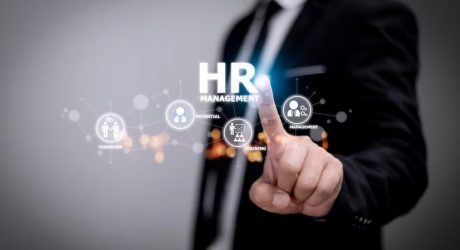The Employee Retention Credit (ERC) has been a lifeline for many businesses struggling to weather the economic challenges of the ongoing COVID-19 pandemic. The ERC provides eligible employers with a valuable tax credit to help cover payroll costs and retain their workforce.
However, claiming the ERC can be a complex and nuanced process, and making mistakes can lead to costly consequences.
In this article, we will discuss some of the most common mistakes to avoid when claiming Employee Retention Credit, including failing to meet eligibility requirements, incorrect calculation of the credit, double-dipping, failure to maintain adequate documentation, and improper timing of wage payments.
By understanding these common pitfalls and taking proactive steps to avoid them, businesses can maximize the benefits of the ERC and avoid costly mistakes.
Overview Of Common Mistakes To Avoid

When claiming the Employee Retention Credit, there are several common mistakes that businesses should avoid to ensure that they receive the full benefit of the credit.
These mistakes include:
- Failing to meet eligibility requirements, such as not experiencing a significant decline in gross receipts or not being a qualified employer under the ERC guidelines.
- Incorrect calculation of the credit, such as failing to include all eligible wages or calculating the credit based on incorrect payroll data.
- Double-dipping, which involves claiming the ERC and other COVID-19 relief programs for the same wages, such as the Paycheck Protection Program.
- Failure to maintain adequate documentation, such as failing to keep detailed records of wage payments and other eligible expenses.
- Improper timing of wage payments, such as paying wages after the end of the covered period or paying wages that are not considered qualified wages under the ERC guidelines.
By understanding these common mistakes and taking proactive steps to avoid them, businesses can ensure that they receive the full benefit of the Employee Retention Credit and avoid costly consequences.
1. Failing To Meet Eligibility Requirements
One of the most common mistakes businesses makes when claiming Employee Retention Credit (ERC) is failing to meet the eligibility requirements.
To be eligible for the ERC, a company must be able to demonstrate that it has suffered a material decrease in gross receipts or a whole or partial cessation of operations as a direct result of a government order connected to COVID-19. Additionally, businesses must be considered qualified employers under the ERC guidelines, which include factors such as size and industry.
Another mistake is failing to properly document eligibility requirements. The ERC requires businesses to maintain detailed records of their gross receipts and other eligibility factors, which can be time-consuming and complex. Failure to maintain adequate documentation can lead to disqualification for credit or other consequences.
The consequences of claiming the ERC without meeting eligibility requirements can be significant, including audits, penalties, and repayment of the credit with interest. Therefore, it is crucial that businesses fully understand and meet the eligibility requirements before claiming the ERC. Seeking professional assistance from a tax advisor or accountant can also help ensure that businesses are eligible and are correctly claiming the credit.
2. Incorrect Calculation Of The Credit
Another common mistake that businesses make when claiming Employee Retention Credit (ERC) is an incorrect calculation of the credit. The ERC is calculated as a percentage of eligible wages paid to employees during a designated covered period. The percentage of eligible wages ranges from 50% to 70%, depending on the eligibility period.
One mistake businesses make is failing to include all eligible wages in the calculation. Eligible wages include not only salaries and wages but also certain health care expenses and retirement plan contributions. Failing to include all eligible wages can result in a lower credit than the business is entitled to.
Another mistake is an incorrect calculation of the covered period. The ERC is calculated based on eligible wages paid during a designated covered period, which varies depending on the eligibility period. The covered period must be carefully calculated to ensure that all eligible wages are included and that the credit is calculated accurately.
Consequences of an incorrect calculation of the credit can include repayment of the credit with interest, as well as penalties and interest for underpayment of taxes. Therefore, it is crucial that businesses understand the ERC calculation and seek professional assistance from a tax advisor or accountant if necessary. Keeping detailed records of wages and eligible expenses can also help ensure an accurate calculation of the ERC.
3. Double-Dipping
Another common mistake that businesses make when claiming Employee Retention Credit (ERC) is double-dipping. Double-dipping occurs when businesses claim the ERC for wages that have already been claimed under other COVID-19 relief programs, such as the Paycheck Protection Program (PPP) or the Families First Coronavirus Response Act (FFCRA).
Businesses must ensure that they do not claim the same wages for multiple COVID-19 relief programs, as this can result in penalties, interest, and other consequences. For example, if a business received a PPP loan and used the loan to pay wages, it cannot claim those same wages for the ERC.
To avoid double-dipping, businesses must carefully track their expenses and ensure that they are not claiming the same wages for multiple programs. This can be complicated, as some COVID-19 relief programs overlap in eligibility and expenses.
4. Failure to Maintain Adequate Documentation
Another common mistake that businesses make when claiming Employee Retention Credit (ERC) is a failure to maintain adequate documentation. The ERC requires businesses to provide detailed documentation of eligible wages and expenses to claim the credit.
Businesses must maintain documentation that supports the calculation of the ERC, including records of eligible wages, health care expenses, and retirement plan contributions. Additionally, businesses must maintain documentation that supports their eligibility for the ERC, such as proof of a full or partial suspension of operations due to a government order or a significant decline in gross receipts.
A failure to maintain adequate documentation can result in the denial of the ERC or the repayment of the credit with interest, as well as penalties and interest for underpayment of taxes. Therefore, it is crucial that businesses keep detailed records and maintain adequate documentation to support their ERC claim.
To avoid this mistake, businesses should keep records of all eligible expenses, including payroll records, health care expenses, and retirement plan contributions. Additionally, businesses should keep records that demonstrate their eligibility for the ERC, such as government orders, financial statements, and other relevant documentation.
5. Improper Timing of Wage Payments
Another common mistake that businesses make when claiming Employee Retention Credit (ERC) is the improper timing of wage payments. The ERC is only available for eligible wages that are paid during specific periods, and businesses must ensure that they pay eligible wages during the correct time frame to claim the credit.
For example, businesses can claim the ERC for wages paid between March 13, 2020, and December 31, 2021, for the first and second quarters of 2021. If a business pays eligible wages outside of this time frame, it may not be eligible for the ERC.
Additionally, businesses must ensure that they pay eligible wages within the correct quarter to claim the credit. For example, if a business pays eligible wages in January 2021 for the fourth quarter of 2020, it may not be eligible for the ERC.
To avoid this mistake, businesses should carefully track their wage payments and ensure that they pay eligible wages during the correct time frame. This may require adjustments to payroll systems or other changes to ensure that eligible wages are paid during the correct quarter.
Conclusion
In conclusion, the Employee Retention Credit (ERC) is a valuable tax credit that can provide significant benefits to eligible businesses.
However, businesses must be careful to avoid common mistakes when claiming credit, such as failing to meet eligibility requirements, incorrect calculation of the credit, double-dipping, failure to maintain adequate documentation, and improper timing of wage payments.
To avoid these mistakes, businesses should seek professional assistance from a tax advisor or accountant and carefully track their eligibility and wage payments. By avoiding these common mistakes and properly claiming the ERC, businesses can take advantage of the credit to reduce their tax liability and improve their financial position.
Read Also:




























